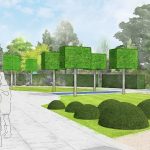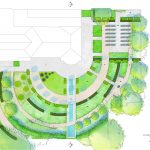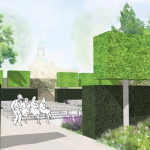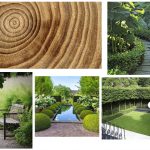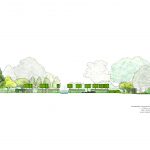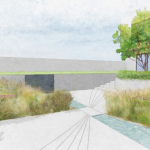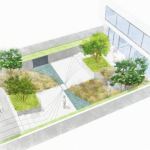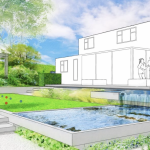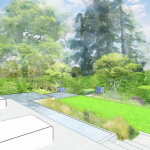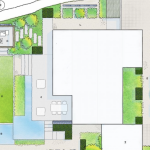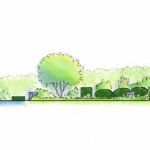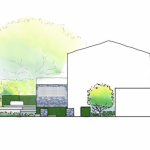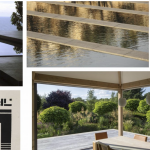Alex Horlick
Currently based in London I graduated from the LCGD in the summer of 2021.
Although I’ve always a had a deep interest in horticulture and design, prior to this course I have been working in film & television as a sound designer, which strangely has many similarities to garden design.
Drawing on a wide range of influences from art and culture as much as from the natural world I aim to design emotive and timeless spaces with a real sense of place.
Using strong underlying geometry and structure, clean lines are then softened with rich planting to create unique and beautiful gardens.
An understanding of form and texture, with an appropriate palette of materials and plants, allows each garden to respond to the client’s needs and to the individual characteristics of the site. I believe a garden does not exist in isolation, so ensuring the design settles within its surroundings is important if the space is to fit harmoniously within the wider landscape.
As well as bringing joy and beauty, gardens connect us to the natural world, following a philosophy of sustainability I also aim to use local materials as much as possible and to increase biodiversity with my plantings.
I am comfortable designing gardens at any scale and am used to delivering creative and detailed work.
The brief was to re-imagine the gardens for Cambridge Cottage, a Georgian building that is part of Kew Gardens and used as a wedding venue and for other events.
The design is based on the growth rings of a tree with the rings expanding from the heartwood at the centre of the garden. As the garden grows outwards the space becomes wilder, more informal, and elements of the wider landscape play a more important role.
We move from a clipped, controlled feel around the cottage towards looser more naturalistic planting with a woodland edge feel by the boundary to Kew Gardens.
The mature trees and attractive views are incorporated and built upon to link to the scenery beyond. Privacy is created with clipped Yew hedges, which along with cubed Hornbeam trees, help delineate the garden’s form. Both add structure and help lead the visitor though the space. Further out these clean lines fragment and are broken, clipped forms become multi-stemmmed trees, inspired by the forestry practice of coppicing.
The garden aims to create a flexible private setting at the centre of the garden whilst reconnecting the whole to the surrounding landscape, creating a link to Kew Green and more importantly through to Kew Gardens.
The garden aims to set a terrace floating in the clouds above a tranquil glade, with emphasised views into the woods beyond. A cubist representation of the local landscape runs through the garden below.
Reflecting pools of water bring the sky down below the terrace, soft forms and textures in the planting give the impression of clouds to contrast the modern lines of the design. The view out of this glade to the woods beyond is paramount – this is framed and reflected, with the garden focusing out towards this horizon.
The water represents the River Chess welling up and running through the town before cascading down to the water meadows below. Cubes of flint represent the piles of stone, the lawn is the dry valley the town sits within, and the densely foliaged top of the garden represents the Beech hanger woods sited above the valley.
